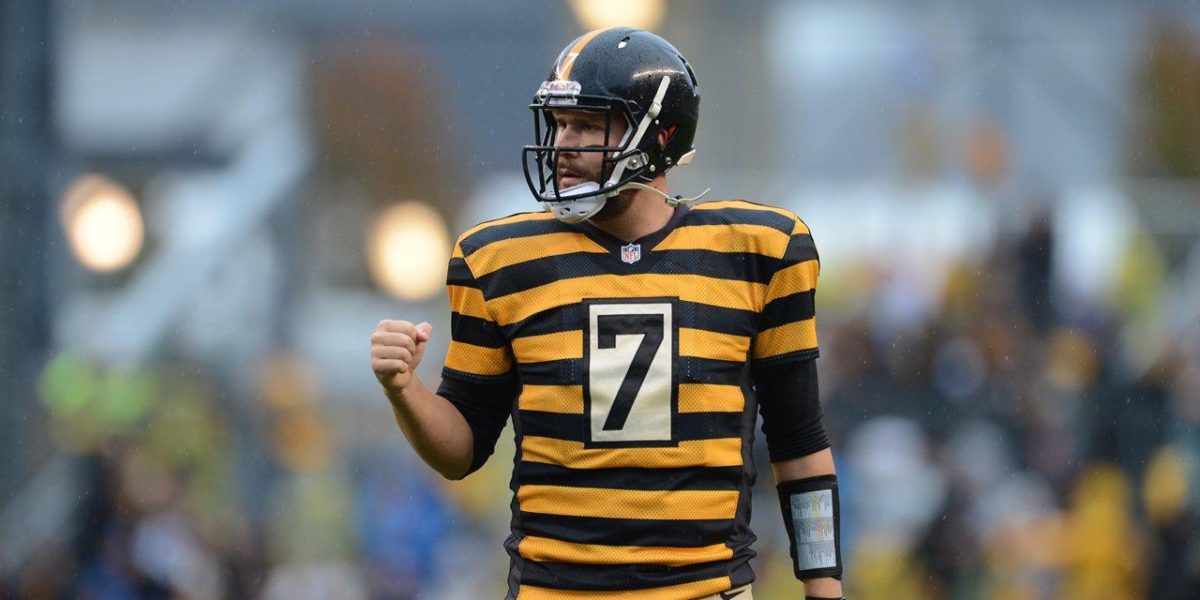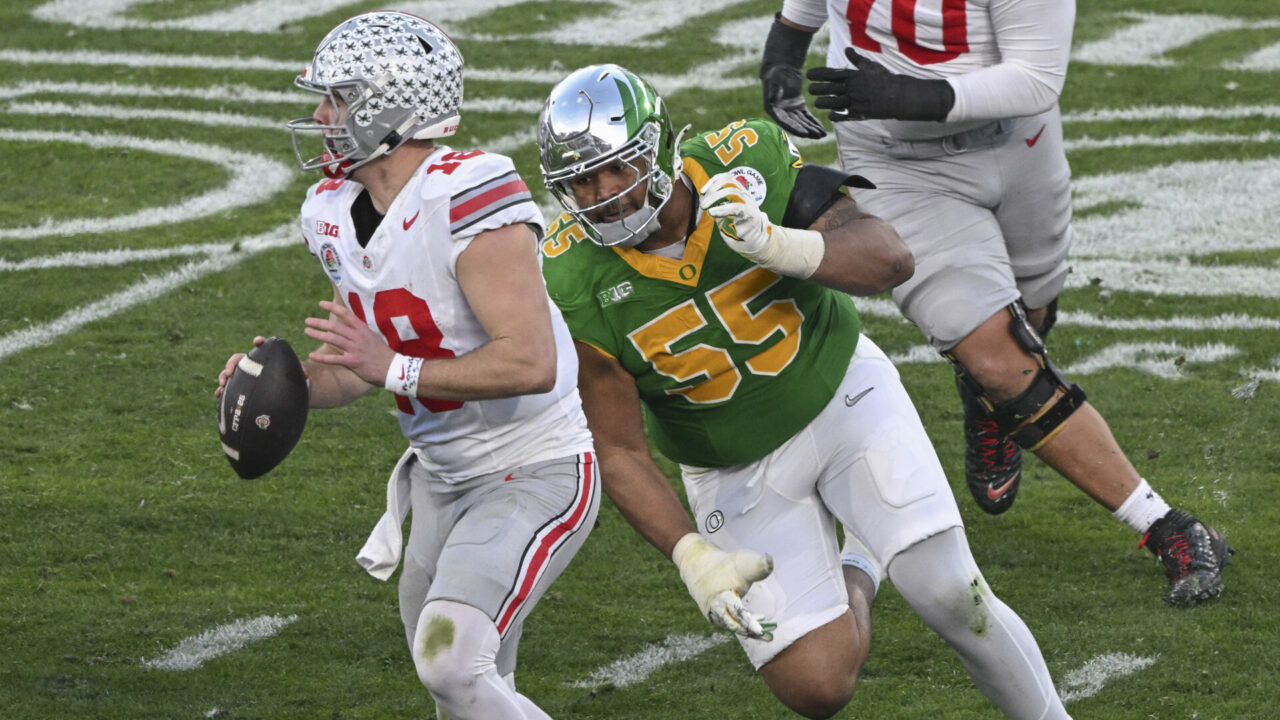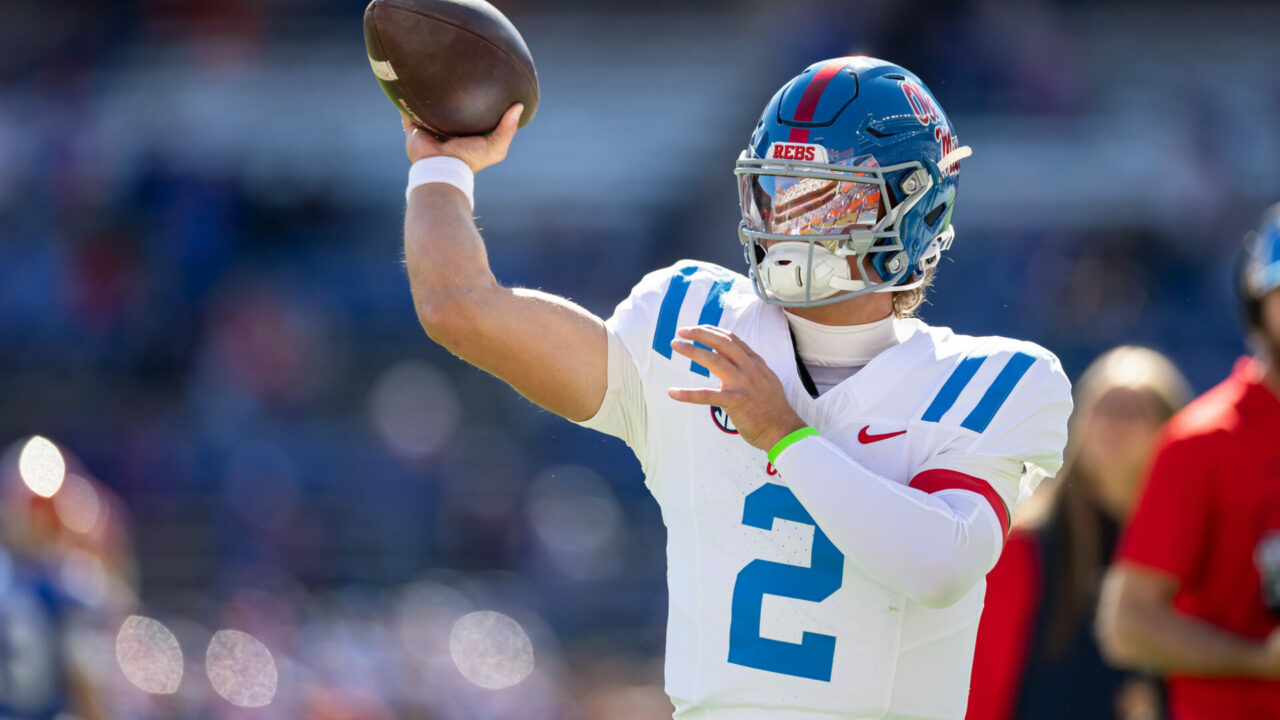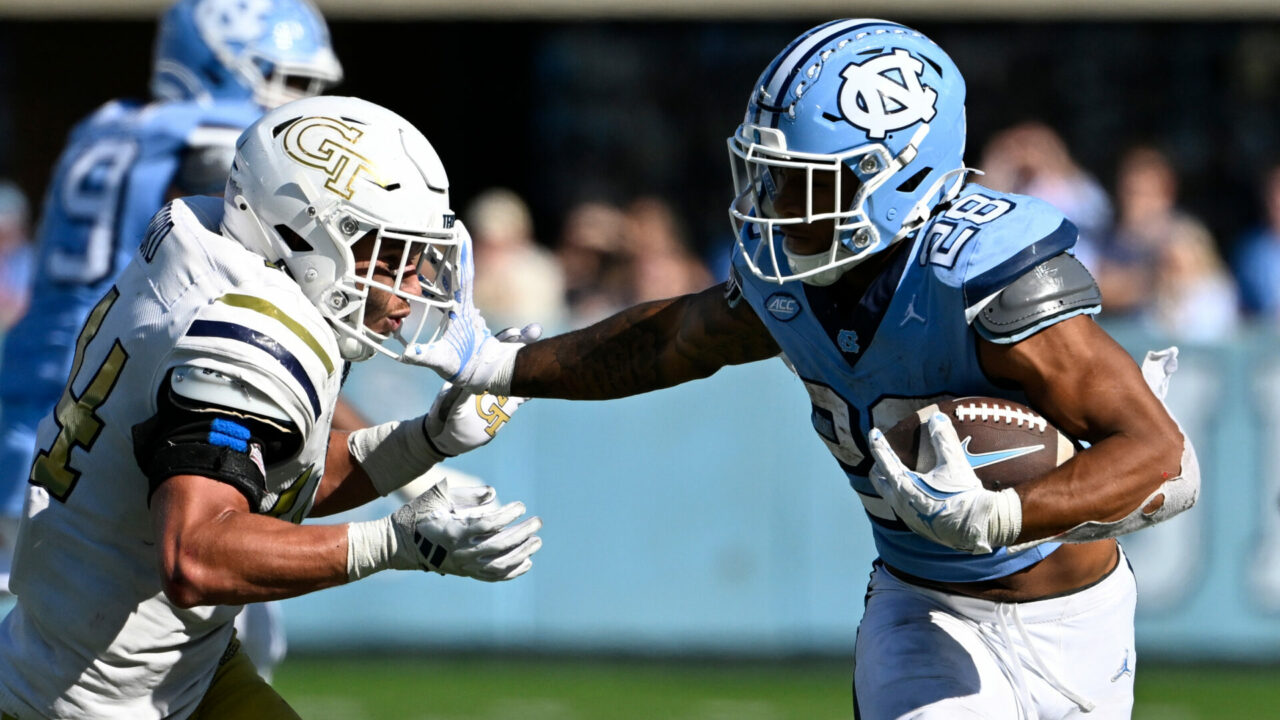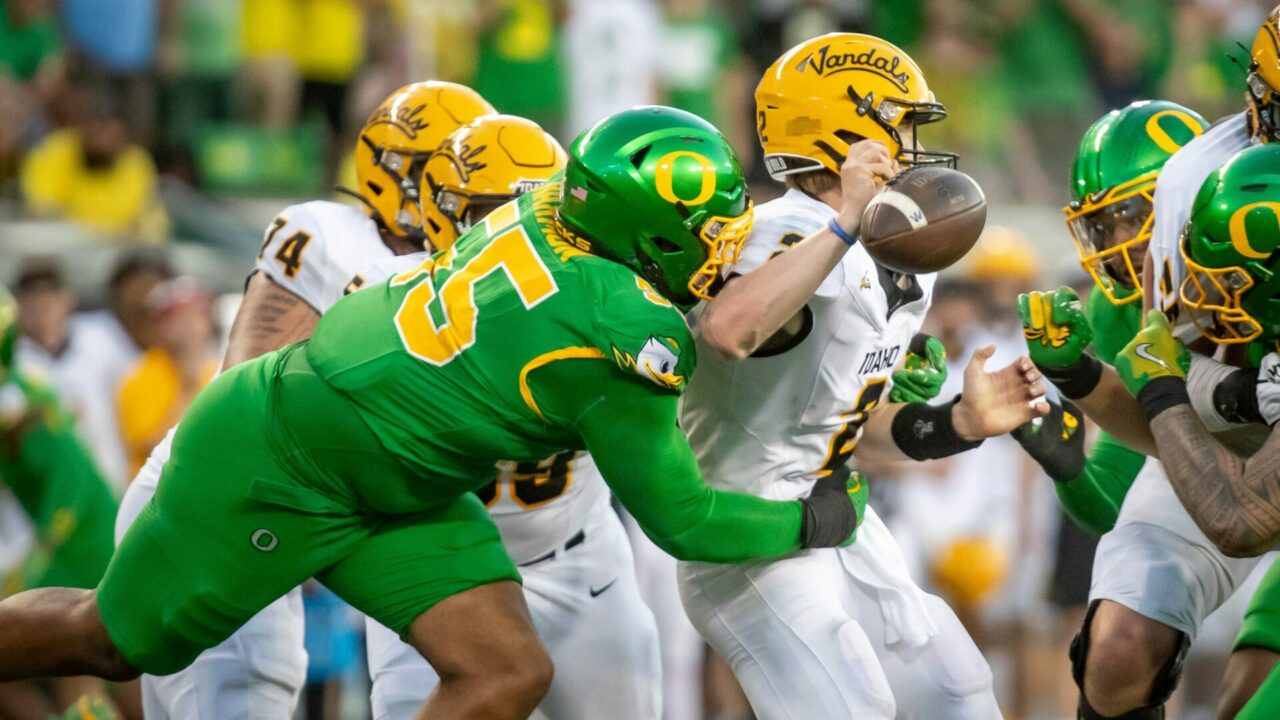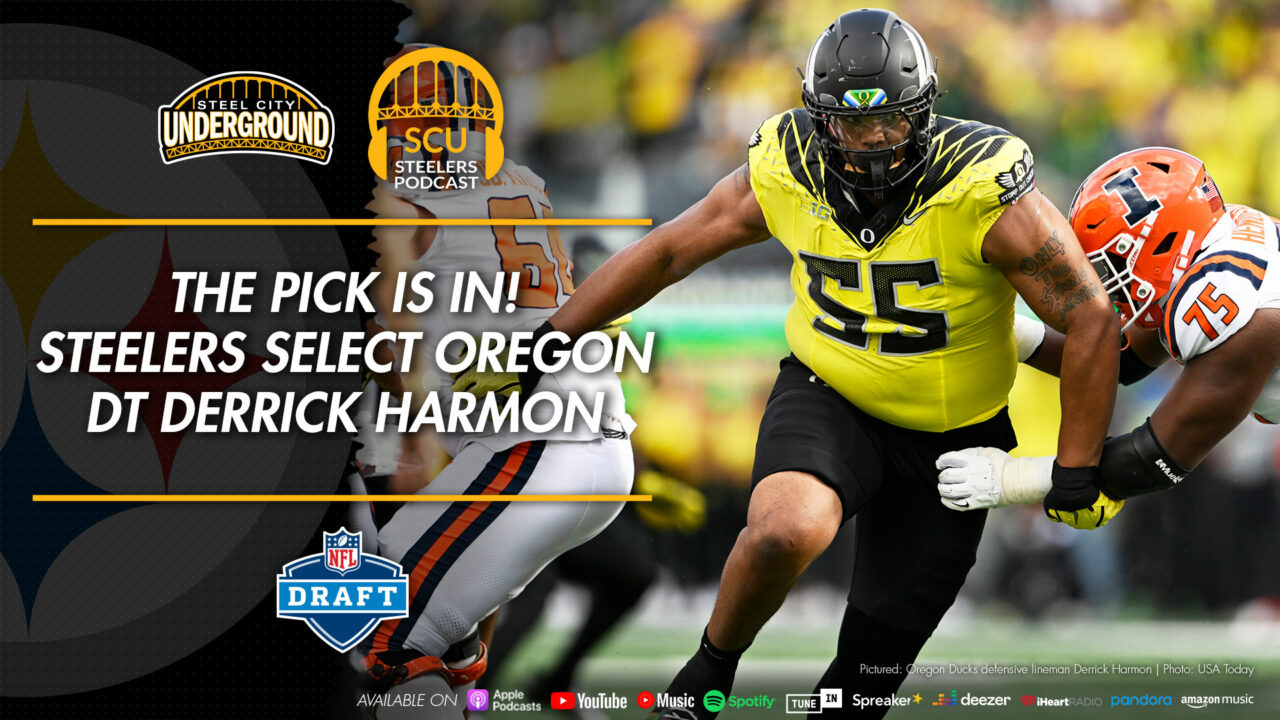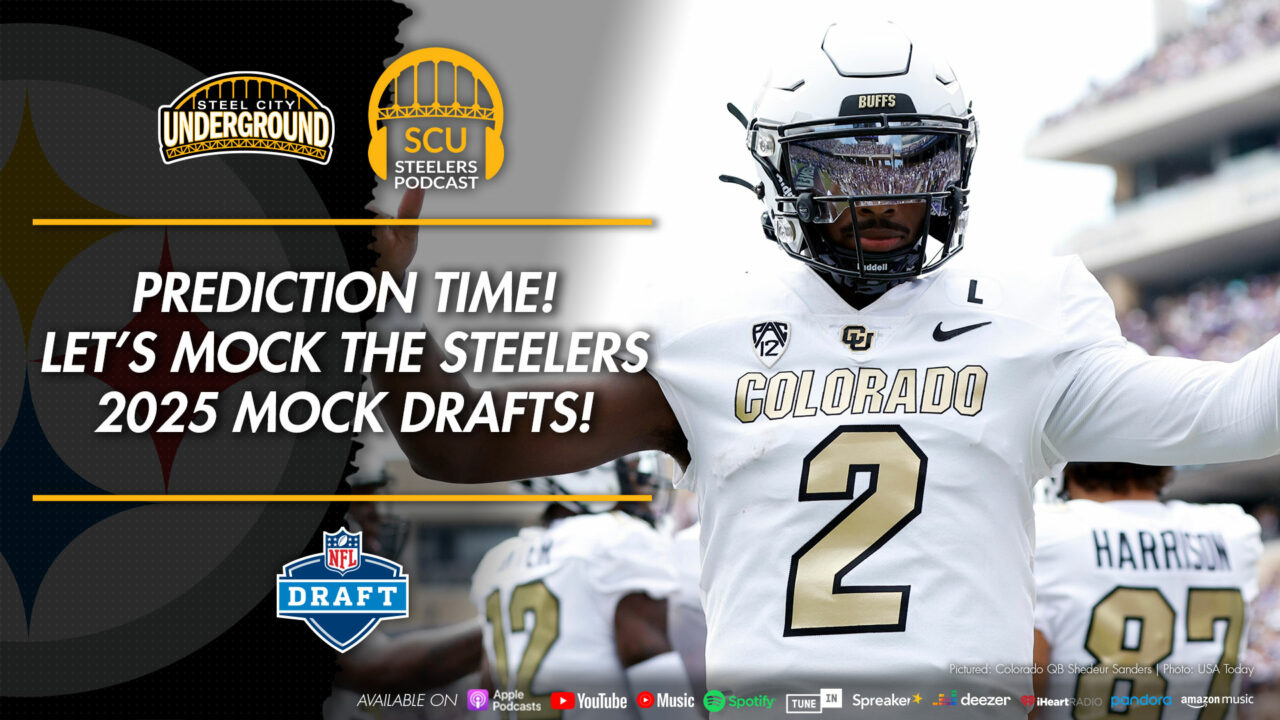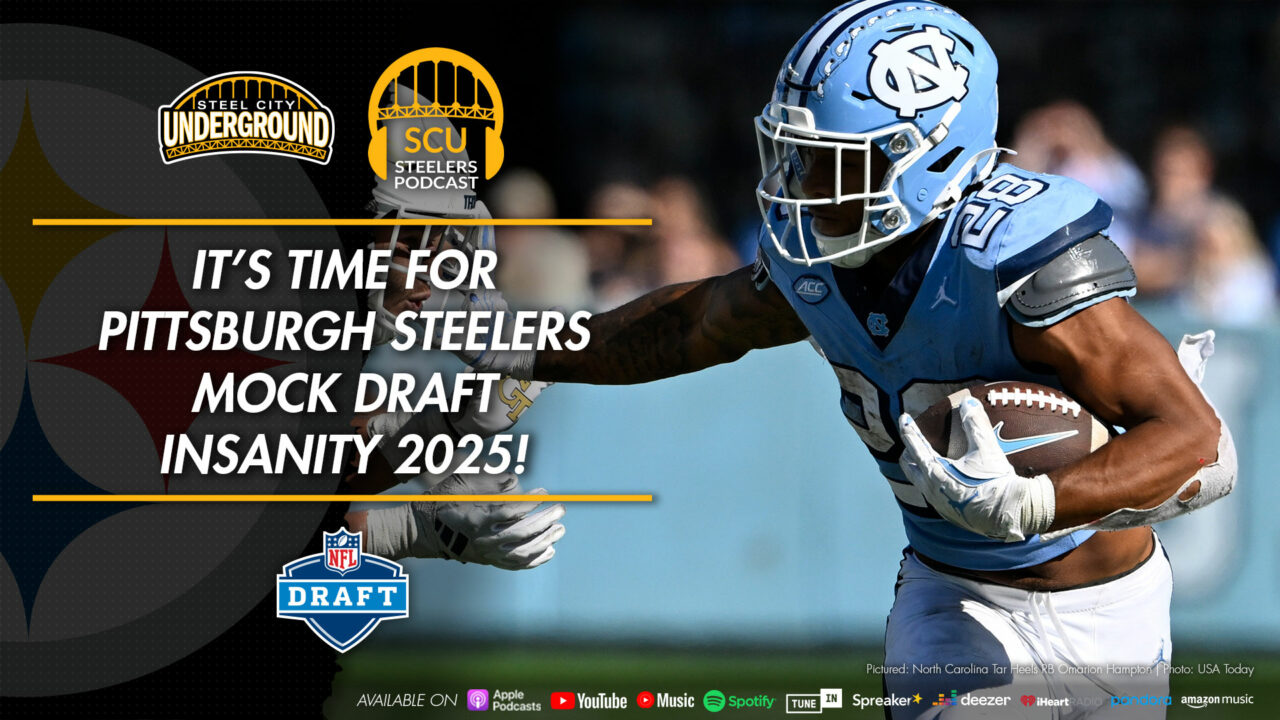Who is the best quarterback in the history of the Steelers?
Admittedly, ranking the greatest quarterbacks in the history of the Steelers is not a question which keeps you up nights, is it? At the same time, it’s not a question that has a consensus answer either. Who is the best quarterback in the history of the Steelers? Who are the top five? Is there a top five?
In a recent podcast, Joe Kuzma and I spent more time talking about backup quarterbacks, specifically how we have selective memory when it comes to some of them. That got me thinking about our starters, and how we view them. Everyone agrees that Ben Roethlisberger and Terry Bradshaw are at the top of the list, with some putting Ben at the very top, and others putting Terry up there.
But once you get past Ben and Terry, who’s left to fill out the top five spots?
In The Conversation
If you visit Pro Football Reference, there have been 186 players who have attempted a pass for the Steelers: those names include Willie Parker (a running back), Daniel Sepulveda (a punter), Hall of Fame running back Jerome Bettis, and current Steelers safety and special teams captain Robert Golden. (Yes, Robert Golden!) Also, included in those 186 names are Hall of Fame quarterbacks who once graced the Steelers roster, like Len Dawson and Johnny Unitas.
To be “in the conversation”, let’s start by saying that you have to have played a minimum of five seasons for the Steelers, and you have to have played the bulk of that time as the starting quarterback. This will eliminate such noteworthy passers as former punter Josh Miller. (Who is 1-for-1 for 91 yards and a touchdown in his Pittsburgh “passing” career.) The criteria will also eliminate Tommy Maddox, who only played three full seasons as the starter (2001, 02, 03) but lets in “He Who Shall Not Be Named” (for the moment anyway) who played five full seasons from 1991 – 1995.
There are six names that I think have a legitimate claim to be in the conversation for Top Five All-Time Steelers Quarterbacks. They are, in no particular order:
- Bobby Layne
- Kordell Stewart
- Neil O’Donnell (i.e. “He Who Shall Not Be Named”)
- Bubby Brister
- Ben Roethlisberger
- Terry Bradshaw
Of those guys, the only one whose career I missed was Bobby Layne. (I’m old, but I’m not THAT old!) I could have included players such as Jim Finks, Mark Malone, or Mike Tomczak, but it feels oxymoronic to include them in a top five list. I’m also going to limit this comparison to a specific set of statistics:
- Completion Percentage
- Touchdown to Interception Ratio
- Passing Yards
- Passer Rating
- Fourth Quarter Comebacks
- Game Winning Drives
- Championships
In addition, I’m only going to use stats for years a quarterback played with the Steelers. Layne had many years in Detroit, and as we know, O’Donnell fled to the Jets, Bengals, and Titans.
Yards Passing/Completion Percentage/Passer Rating
These three statistics give an overall idea of the quality of play for these quarterbacks. Here is a quick breakdown of each:
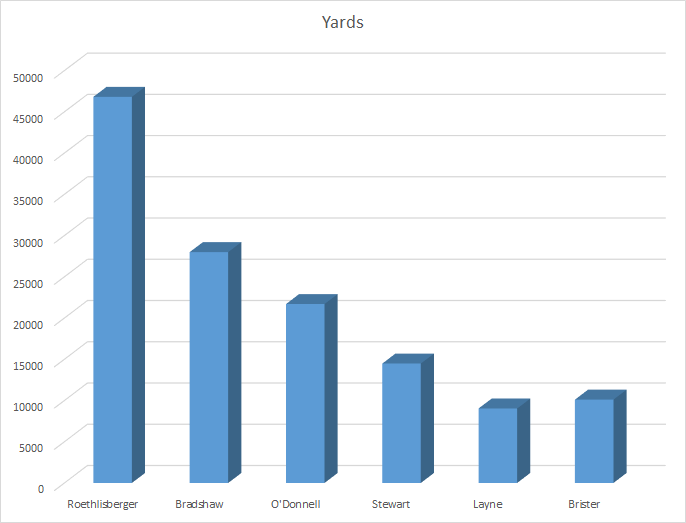
Yards Passing
Of the group, Ben has been the most productive. Roethlisberger is the clear leader in passing yards, and it’s not even close.
Ben has had seven seasons where he threw for over 3,000 yards and four where he has thrown for over 4,000. He also holds the Steelers single season passing record with 4,952 yards in 2014. Bradshaw threw for 3,000+ yards only twice in his career, as did Kordell Stewart. Neil O’Donnell only managed it once, and both Layne and Brister never approached 3,000 yards in a season.
It’s true that Ben has played more games than any of the others (Roethlisberger 185, Bradshaw 168, Stewart 113, O’Donnell 66, Brister 61, Layne 55) but even his per game average (253) is considerably higher than the others (Bradshaw 166, Stewart 128, O’Donnell 195, Layne 164, Brister 166).
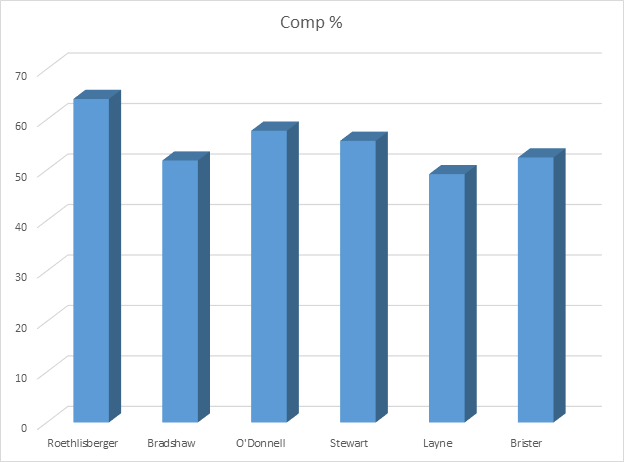
Completion Percentage
Ben tops this list (get ready for a repetitive theme) as well. His 64.1 career percentage is the only one over 60 percent. O’Donnell comes in second with 57.8 two points ahead of Kordell Stewart (55.8). Bubby Brister and Bradshaw both come in above 50 percent (52.5 and 51.9) and Layne falls below the 50 percent line coming in at 49.2).
In only 2 of Ben’s 13 seasons has he been below 60% completion percentage (2006 and 2008), and he peaked at 68 percent in 2015. Bradshaw’s best season (65.5) was in 1983 when he only played 1 game, and threw only 8 passes. Outside of that, Bradshaw had 4 seasons in the 40 percent range, 1 in the 30’s and 8 in the 50’s. Kordell Stewart had two seasons of 60+, O’Donnell and Brister never topped 60 and Layne only topped 50 percent in one season (1961).
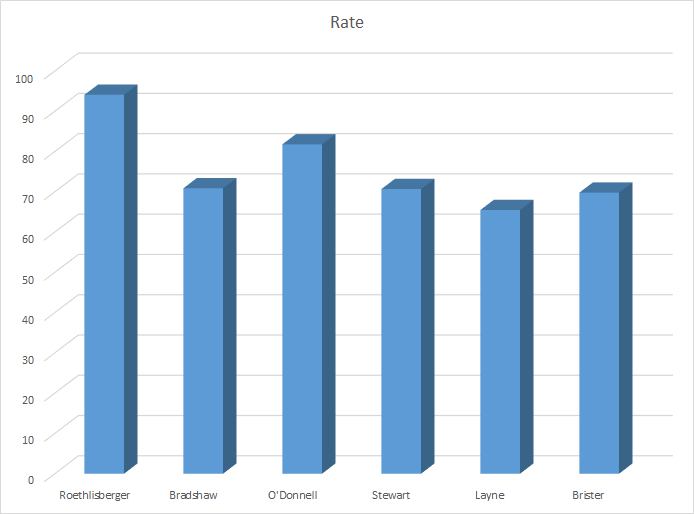
Passer Rating
Passer rating is a formula designed to measure a quarterback’s performance. It takes into account four different criteria: completion percentage, yards per attempt, touchdowns per attempt, and interceptions per attempt.
No surprise here: Ben leads the pack again. His career passer rating of 94.1 is double digits better than anyone else on the list. O’Donnell again comes in second (81.8) followed by Bradshaw, Stewart, Brister, and Layne (70.9, 70.7, 69.8 and 65.5).
What does all this show?
From the standpoint of production, you could make the claim that Ben is clearly the best quarterback in Steelers history… followed not by Terry Bradshaw, but rather by Neil O’Donnell. Of course, that’s not the only measuring stick that exists, and no one is going to claim that Neil O’Donnell was a better quarterback than Terry Bradshaw! What we might take away from this is that maybe (just maybe) O’Donnell wasn’t as bad as we all remember.
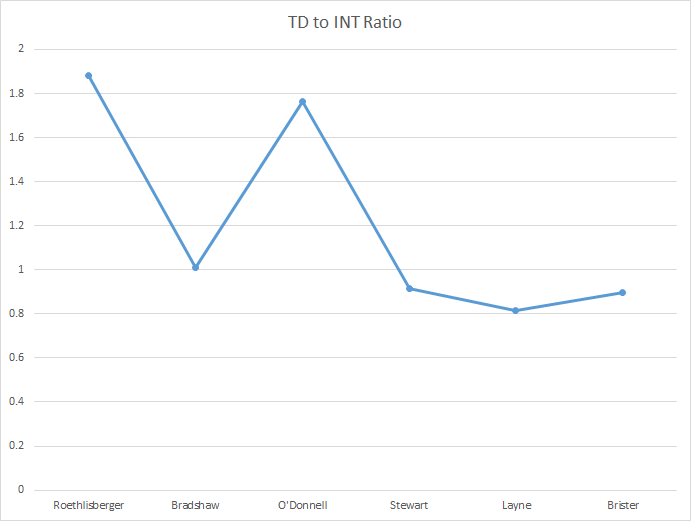
Touchdown to Interception Ratio
This is another somewhat cryptic statistic that gives you an idea of the “riskiness” of a quarterback. Ben has been accused of taking too many risks over his career, but the interesting thing that this stat shows is that he is not as much of a risk taker as some other quarterbacks who have worn the Black and Gold. Part of that speaks to the skill and ability of Ben versus some of the other players. He has the ability to make throws that nobody else on this list could have made, and as a result, he will sometimes push a bit more.
To get a different look, this chart shows both the INT and TD throws by each for their career.
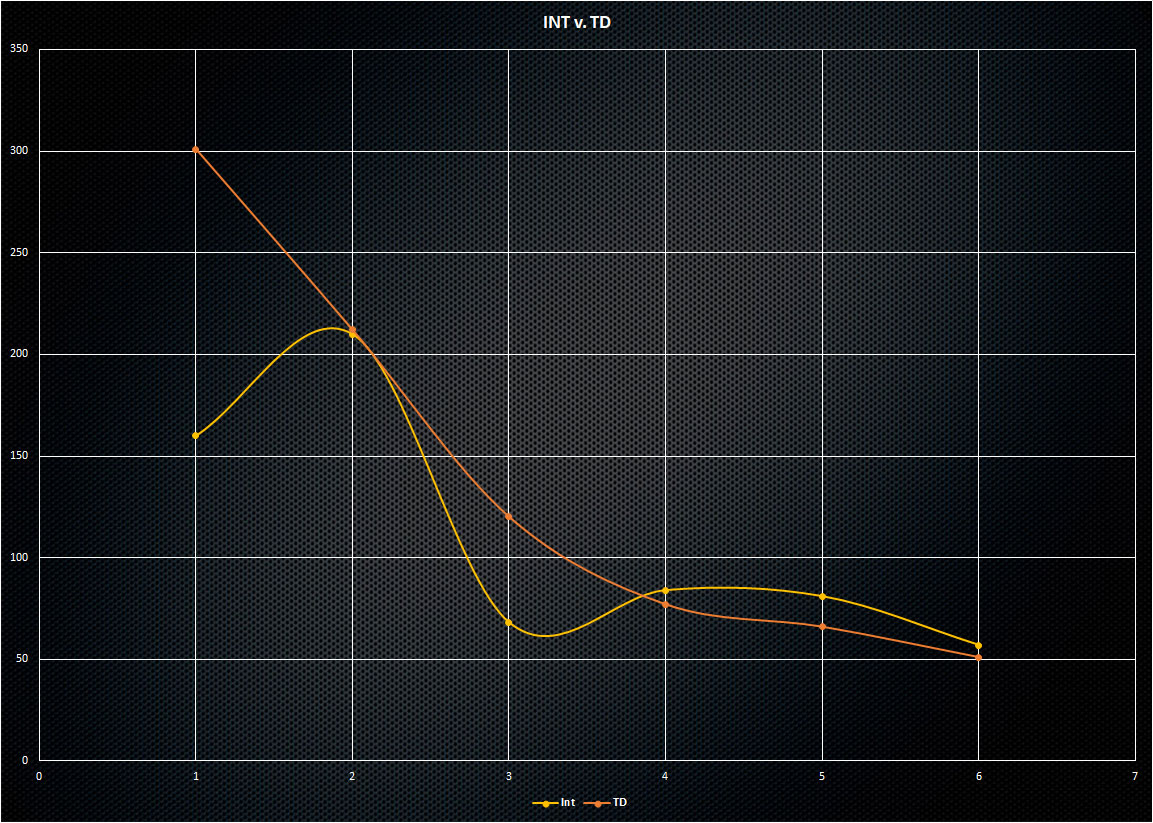
From this, you get a better sense of what these numbers mean. Ben is about twice as likely to throw a touchdown than he is an interception. Bradshaw was about even: it could go for six or it could be a pick. O’Donnell was more likely to throw a touchdown than a pick (assuming the game didn’t matter) and Stewart, Layne, and Brister all were more likely to throw a pick than a TD. Ben has thrown 301 touchdowns for the Steelers (141 more TDs than INTs – the Steelers career leader). O’Donnell threw 120 TDs against only 68 INTs. (If only that ratio had played out in AFC Championship games and Super Bowls!) Bradshaw threw 212 TDs and 210 INTs and Stewart, Brister, and Layne all threw more INTs than TDs.
Again, there is no doubt that Ben takes risks, but his talent level is such that those risks tend to pay off rather than result in a turnover. Outside of O’Donnell, all of the other guys in this discussion were either nearly as likely, or more likely to throw a pick than a TD.
Fourth Quarter Comebacks/Game Winning Drives/Championships
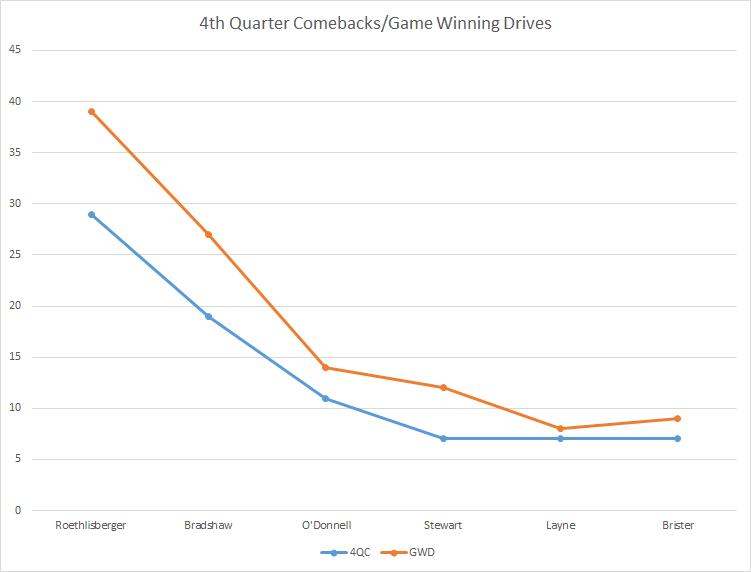
Fourth Quarter Comebacks/Game Winning Drives
If you are a Bradshaw guy, then you might make the argument that the reason he doesn’t have more comebacks and game-winning drives is that during his era the Steelers would get a lead and then ground and pound it; relying primarily on their defense to hold leads rather than continuing to pressure the scoreboard with the offense.
I can’t argue with that. However, if you’re going to take that tact, you also have to give credit to the defense for a lot of the success of those 70’s teams and four Lombardi trophies. The truth is that when the Steelers play now, and they have the ball at the end of the game with a chance to win, there is a sense that they can and will win the game.
That was not the case with any other group that I can remember.
The come from behind wins and game-winning drives are an indication of leadership and the ability of the quarterback to take the team on his back. Ben has shown that he can do that better than any quarterback in Steelers history.
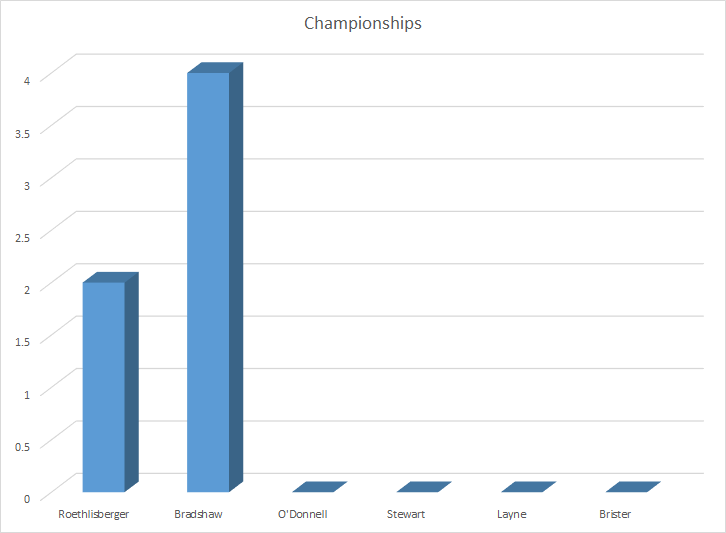
Championships
Finally, someone other than Ben tops the list… and no surprise, it’s Terry Bradshaw.
Despite all of the other statistics, there is no question that the four Super Bowl rings owned by Terry Bradshaw weigh heavily on any conversation about who the best Steelers quarterback is. The fact that O’Donnell, Stewart, Layne, and Brister have a giant goose egg between them feels like a legitimate reason to eliminate them from the top spot. (Not that they ever really were in consideration for that).
Conclusion
So, who is number one? Does Ben Roethlisberger’s statistical domination outweigh Terry Bradshaw’s four rings? Where do the other’s fall? Who rounds out the top five quarterbacks in Steelers history?
Consider this: Dan Marino is considered by many to be the greatest quarterback to never win a Super Bowl. It’s based purely on his statistical domination of the game. Ben has won two and has been to three. His stats are clearly far and away above those of anyone else in team history. Yes, Bradshaw played in an era where running and defense dominated. The two years when offenses started to take the fore, he had two of his best seasons.
Still, the telling piece of this puzzle is that cryptic interception-to-touchdown ratio. The bottom line is Bradshaw took risks that he thought he had the talent to deliver on, but Ben actually has had the talent. I don’t think it’s a huge upset or surprise to find that I view Ben Roethlisberger as being at the top of this list.
What might be a bigger surprise is that I have Neil O’Donnell ranked third, and a close third to Bradshaw’s second.
Here is my final ranking of the top 5:
- Ben Roethlisberger
- Terry Bradshaw
- Neil O’Donnell
- Kordell Stewart
- Bubby Brister
If I had allowed Tommy Maddox to be a part of the conversation, he would have kicked Bubby off of the list. Instead, Bubby edges out Bobby Layne because when Layne played for the Steelers he was near the end of his career, and not the quarterback he had been prior.
Selective memory helps us remember Bradshaw only for his successes rather than his failures, and Ben for his failures rather than his successes. In 20 years, after Ben has accepted his gold jacket and faded into the sunset of retirement, I’m sure we’ll only remember the last-minute heroics to Santonio Holmes in the Super Bowl, or to Mike Wallace it the Green Bay game. We’ll remember the 2 500+ yard games and the back-to-back six touchdown pass performances, and we’ll forget the bad interceptions and mistakes.
Instead, we’ll be focused on whomever the current Steelers quarterback is, and screaming that he can’t hold the jockstrap of Roethlisberger.
This will be the first, and surely the last time I will say that Neil O’Donnell wasn’t as bad as I want him to have been, but again selective memory is going to kick in, and he will return to being “He Who Shall Not Be Named” because I simply cannot get Super Bowl XXX out of my mind.
